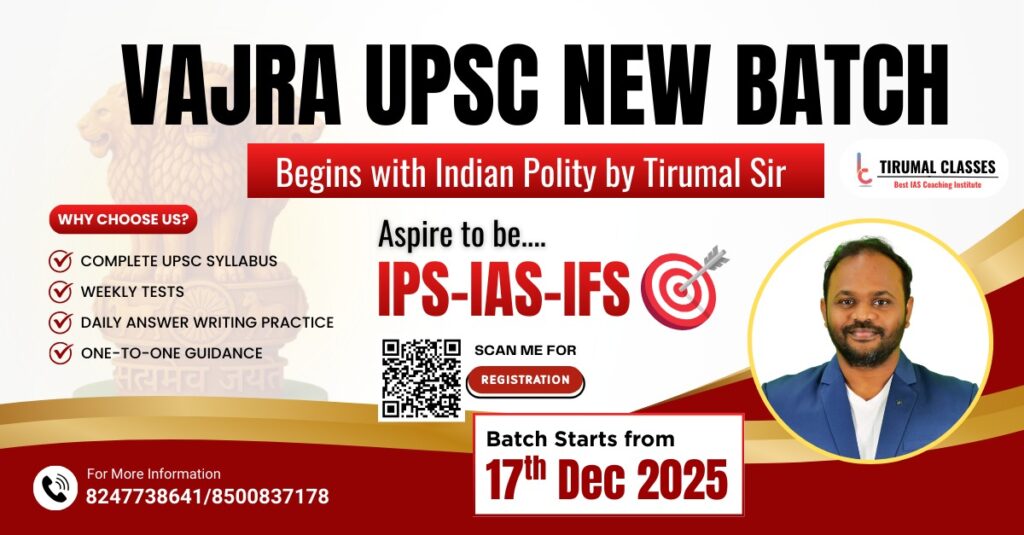Source: The Hindu
The Macaulay Report of 1854 established selection by merit and created an exam based on the idea of “transferability of academic talent to administration,” which laid the groundwork for the current structure of the civil services examination. Following independence, the Kothari Committee (1975) suggested a three-tiered test consisting of an interview, a descriptive main exam, and a preliminary exam.
The preparatory test consisted of a common general studies examination with a weight of 2:1 and an optional subject. Only the names of the candidates who made the short list for the main exam were made public by the UPSC following the preliminary exam. The question paper, the candidates’ scores, and the minimal qualifying score were all kept under wraps and not disclosed to the public.
After the Right to Information Act was passed in 2005, candidates bombarded the UPSC with questions about the purpose of the tests, forcing the agency to reveal its procedures, which were then brought up for court review.
The S.K. Khanna committee was established by the government in 2010 to address this problem. Based on its suggestions, the optional paper was swapped out for a common one in 2011, and the preliminary exam was reorganized to include two papers: Paper I, which covered all of the traditional General Studies topics, and Paper II, which included questions on English comprehension, reasoning, and quantitative aptitude.
However, students from urban areas with strong English language skills were given preference in this format. They could qualify for the preliminary round despite having a considerably lower Paper-I score since just the sum of their Paper-I and Paper-II scores were used. More protests followed, and as a result, the government declared Paper-II a qualifying paper and removed the marks that were used to assess merit. The format of the preliminary test remains the same.
The Arun Nigverkar Committee was established by the government in 2012 to propose a new paradigm. The committee’s numerous recommendations were intended to make the examination process less onerous. The approved modifications were implemented starting in 2013.
Restructured general studies papers spanning a variety of topics, including Indian politics, governance, economy, science, and technology, were part of the new program. The plan is still in place today. Nevertheless, distortions still need to be rectified.
First, the preliminary exam, which was intended to choose the most worthy, has evolved into a “jealous gatekeeper” whose only goal is to cut the number of applicants from over five lakh to about 10,000. The qualifying paper, Paper-II, is difficult for students studying the humanities and favors those with a background in engineering and the sciences.
The questions on Paper-I, which assess knowledge in areas necessary for a job in administrative services, have grown more erratic. Therefore, there is a significant opportunity cost for an applicant who shows up for the test with a sincere desire to serve the nation and is spending his free time preparing for it.
A few adjustments are also required for the main exam. There are 20 short answer questions in the General Studies papers, and applicants’ feedback suggests that more points are given for factual information than for analysis. The “long form questions” that assess the critical thinking abilities of the aspiring civil servant are absent.
Additionally, according to UPSC’s annual reports, the majority of applicants choose optional courses that offer higher scores than their field of study. This discrepancy must be fixed, and two papers that address governance and policy may take the place of the optional. The exam schedule has to be reviewed immediately.
Model Question:
“The Civil Services Examination is not just a recruitment process but a nation-building mechanism.” In light of this statement, critically examine the role of the Civil Services Examination in shaping India’s governance and administrative machinery.
Model Answer:
The Civil Services Examination (CSE), conducted by the Union Public Service Commission (UPSC), is more than a mere selection tool—it is a cornerstone of democratic governance and meritocratic institution-building in India.
The examination is structured to identify individuals with a deep understanding of governance, policy, law, ethics, and socio-economic challenges, ensuring that those entering the administrative machinery are intellectually competent and socially conscious.
Role in Nation-Building:
- Merit-Based Selection: CSE ensures the recruitment of officers from diverse backgrounds purely on merit, strengthening democratic equity.
- Pan-Indian Representation: Candidates from all states and communities can participate, promoting inclusive governance.
- Administrative Backbone: Civil servants selected through CSE hold key positions in policy implementation, disaster response, public health, education, and internal security.
- Ethical Standards: The inclusion of ethics and aptitude in the syllabus reflects the commitment to integrity in public life.
- Policy Innovation and Leadership: Many bureaucrats drive transformative reforms—be it in digital governance, infrastructure, or social welfare schemes.
Challenges:
- Over-academization: Emphasis on rote learning may not reflect administrative capability.
- Urban-Rural Divide: Disparity in access to coaching and resources.
- Mental Health Concerns: Intense pressure leads to stress and burnout.
Way Forward:
- Reform the exam to assess problem-solving and practical decision-making.
- Promote regional languages and digital accessibility.
- Continuous training and lateral entry can supplement skill gaps.
The Civil Services Examination remains a pillar of Indian democracy, selecting individuals who shape public policy and uphold constitutional values. By evolving with time, it can remain both rigorous and relevant, truly serving the cause of nation-building.


